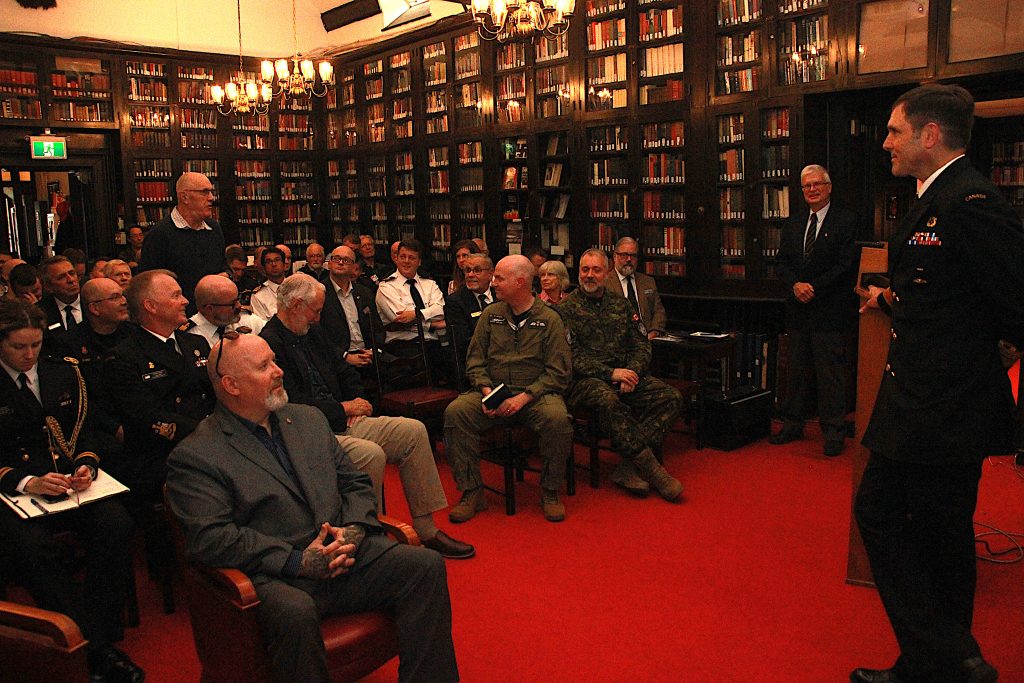
Stealth, lethality, persistence: Commander RCN talks submarines in Halifax
By Ryan Melanson,
Trident Staff
With Canada’s Victoria-class submarines roughly a decade away from the beginning of their decommissioning, the Royal Canadian Navy is tasked with considering the future of the Canadian Submarine Force, as well as explaining the important role of the submarine platform as part of the country’s next-generation naval fleet.
This was the focus of a presentation given in Halifax recently by Vice-Admiral Angus Topshee, Commander RCN. VAdm Topshee delivered a brief titled “Why Canada Needs Submarines” to members of the Royal United Institute of Nova Scotia (RUSI(NS)) at the Cambridge Military Library on October 18.
“The simple thing about submarines is that they offer stealth, lethality, and persistence. That’s the value proposition of subs and what a submarine offers you that no other platform does in the Canadian Armed Forces,” VAdm Topshee said.
“We have the longest coastline in the world, massive responsibility for three oceans, and one of the largest and most complicated pictures in terms of domain awareness,” he added, noting that submarines provide capability to protect our own waters, but also to operate covertly around the world, for extended periods of time.
The RCN entity focusing on the plan for submarines is called the Canadian Patrol Submarine Project; it has been investigating options and determining Canada’s requirements for any future subs. These include the ability to perform precision attacks on patrol, to operate according to environmental standards in Canada’s Arctic, and the ability to operate discreetly for transits of up to 7,000 nautical miles and a minimum of 21 days under the sea without surfacing.
The current preferred approach for procuring new submarines is to purchase an off-the-shelf sub that is foreign designed and foreign built to minimize time and cost, and VAdm Topshee highlighted six designs currently being built or operated around the world in France, Germany, Korea, Spain, Japan and Sweden that are being studied by the CPSP as potentially meeting the RCN’s requirements. Of those, two are already in active service – Japan’s Taigei-class submarines and the Republic of Korea’s KSS III Batch II boats.
While any decision to purchase submarines for Canada will be a political one, VAdm Topshee said the RCN, through the CPSP, will present its recommended course of action to the government, with options to acquire either 8 or 12 submarines to be split between the coasts. For an effective transition that avoids a capability gap, delivery of the first of class of new submarines would begin in the mid 2030s.






